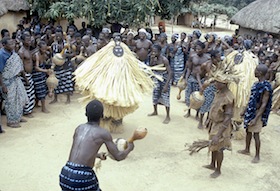Relevance
“‘Art’ cannot be described from a Baule point of view at all, simply because their view does not include ‘art’ in the Western sense of the word.”
*****
By now, it’s a cliché that the modernistic Western notion of “art for art’s sake” no longer obtains — too many artists and curators produce social-minded work; too many museums and institutions see inherent value in public engagement. Indeed, “relevance” is the word of the day; hanging a work of art on a wall and leaving it at that is no longer enough.
But what precisely qualifies as meeting the standards of relevance?
Different folks think different things. To me, essential to relevance is efficacy—something is relevant if it is effective at advancing, supporting, or illuminating something valued among those for whom the relevance is intended.
Success at relevance requires a lot: listening, comprehending, participating, inviting, respecting, empowering, offering, explaining, combining, accepting, adapting, maintaining, co-constructing.
The Baule mask maker… the dancer… the drummer… They serve the village (as well as themselves), employing the above-listed requisite practices (i.e. listening, comprehending, participating, etc…). To
forgo these things—to do something else—is to risk irrelevance within the tribe.
When one seeks to engage through art—be it through sharing or making or brokering an arrangement between an artist and a public—one might be wise to ask, “Who is my tribe?”
By all means, artists ought to stick to their aesthetic, conceptual, and expressive visions—if you are a maker/sharer/broker, you are inescapably a member of your own tribe, and that ought to be honored. But before claiming relevance to anyone else—before asserting some tribal applicability—think about the responsibility such a declaration brings with it.
(I wonder if there is a Baule word for “relevance”?)



